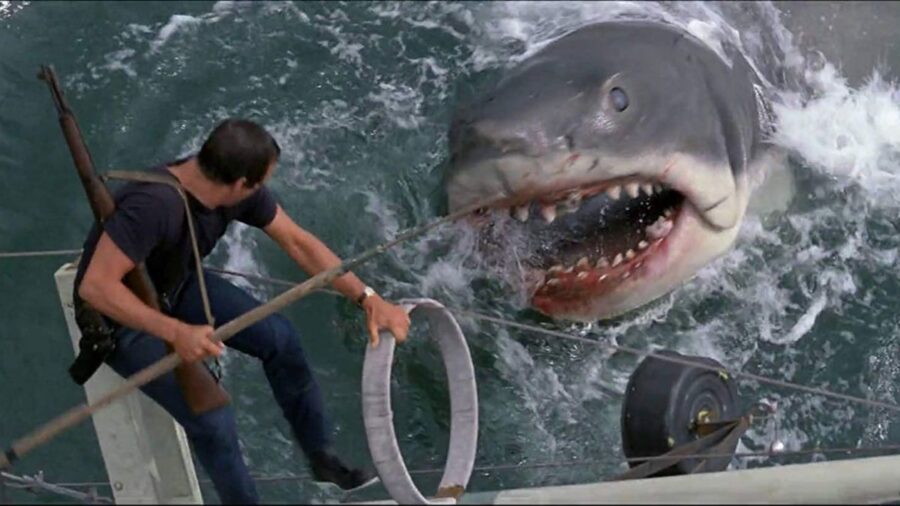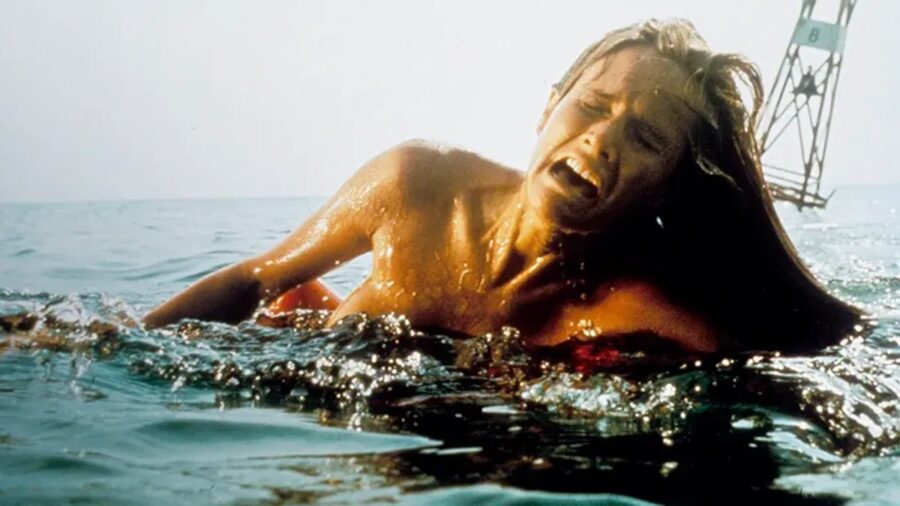The Original Awful Jaws Opening Revealed By Steven Spielberg

Jaws, a masterpiece directed by then-unknown Steven Spielberg, set cinematic standards with its gripping story and groundbreaking effects. The film’s unparalleled success at the box office not only set benchmarks for summer blockbusters but it also catapulted Spielberg into a trajectory that would see him becoming one of the most celebrated filmmakers in the annals of cinema.
Intriguingly, Geek Tyrant reports that the film’s iconic opening almost went in a drastically different and seemingly less appealing direction.
The opening of Jaws was instantly iconic, influencing moviemaking to this day, but Steven Spielberg shared his original, horrible, vision in an upcoming book.
Laurent Bouzereau, known for directing documentaries like Natalie Wood: What Remains Behind and Five Came Back, is releasing a book titled Spielberg: The First Ten Years. Within, he delves deep with Steven Spielberg on Jaws, exploring topics from alternate casting to a rejected opening credits idea. Spielberg described the scrapped scene as a gimmicky concept more fitting for a B-movie.
“One of my bad ideas was to start [Jaws] with the camera inside the gullet of the shark, shooting out toward the teeth with the mouth open,” said Steven Spielberg. “And I shot a sample of that and decided that this was a terrible and gimmicky idea that belonged in a B-movie. I did think it could work for the trailer – I tried it out, and again, it just seemed cheap, and I threw it out.”
The Jaws opening Steven Spielberg chose artfully concealed the enormous shark, a choice reflective of his storytelling prowess. The Oscar-winning director believed that showcasing the shark’s full emergence would have diminished its impact, transforming it into a mere common monster appearance without the depth of primal dread.
By focusing on the initial victim’s sudden, jarring motions, Spielberg masterfully sought to stimulate the viewers’ imaginations, letting them conjure their own terrifying visions of the lurking underwater menace.

The opening scene of Jaws stands as a testament to the power of suspense in cinema, masterfully drawing viewers into a state of intense anticipation without ever showing the actual threat.
“One of my bad ideas was to start [Jaws] with the camera inside the gullet of the shark, shooting out toward the teeth with the mouth open, and I shot a sample of that and decided that this was a terrible and gimmicky idea that belonged in a B-movie.”
Steven Spielberg explaining his first idea to open Jaws
Steven Spielberg’s decision to toss out his original concept in favor of this more elusive approach was a stroke of genius. By keeping the shark hidden, he elevated the scene’s tension and crafted one of the most memorable moments in cinematic history, proving that what is left unseen can often be more terrifying than what is shown.
Released in 1975, Jaws was a massive hit at the box office. Produced for just $7 million, the film raked in an astounding $476 million, a remarkable feat for its era. It was Steven Spielberg’s sophomore feature film, and he subsequently helmed major hits like Close Encounters of the Third Kind, E.T. the Extra-Terrestrial, and Indiana Jones and the Raiders of the Lost Ark.
In Jaws, Sheriff Martin Brody discovers a shark attack victim during a hot summer in Amity Island and contemplates closing its beach-reliant shores. However, facing opposition from Mayor Larry Vaughn and local businessmen, Brody hesitates, leading to another fatal attack.
If Bruce, the animatronic shark used for Jaws had funcitoned properly, Steve Spielberg’s iconic blockbuster would have been a worse movie.
As panic ensues, the town recruits Quint, an experienced shark hunter, and together with Brody and oceanographer Matt Hooper, they embark on a perilous hunt for the Great White shark, quickly realizing the magnitude of the challenge ahead.
Jaws was directed by Steven Spielberg from a screenplay by Peter Benchley and Carl Gottlieb. The film stars Roy Scheider, Robert Shaw, Richard Dreyfuss, Lorraine Gary, Murray Hamilton, Carl Gottlieb, Jeffrey Karmer, Susan Backlinie, and Jonathan Filley. The collective brilliance of this cast and crew instilled a lasting fear of the ocean in audiences worldwide.












